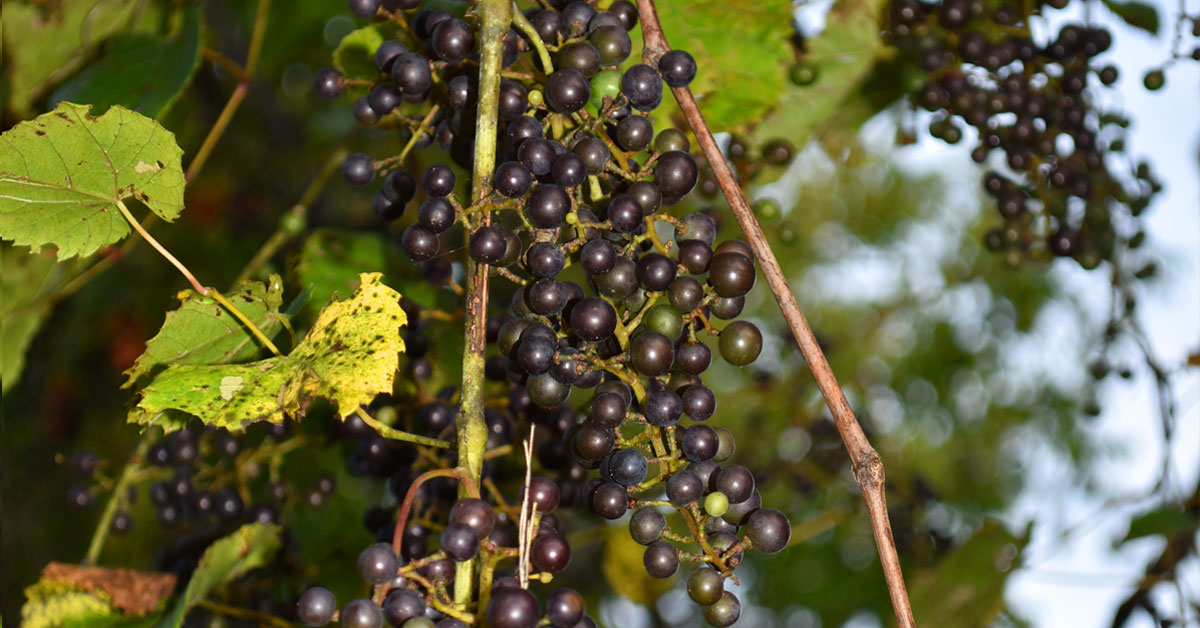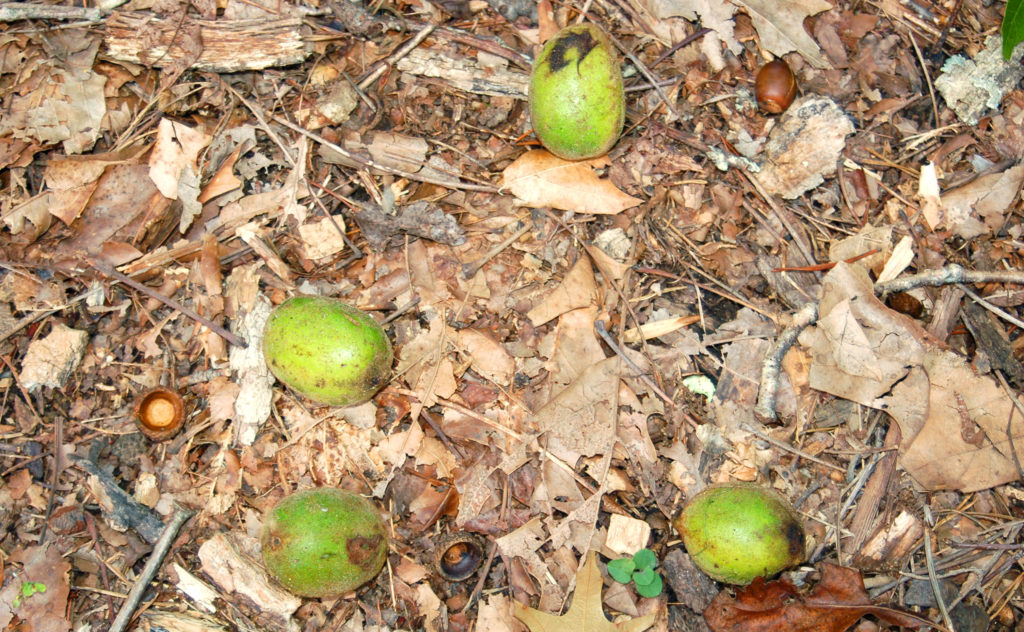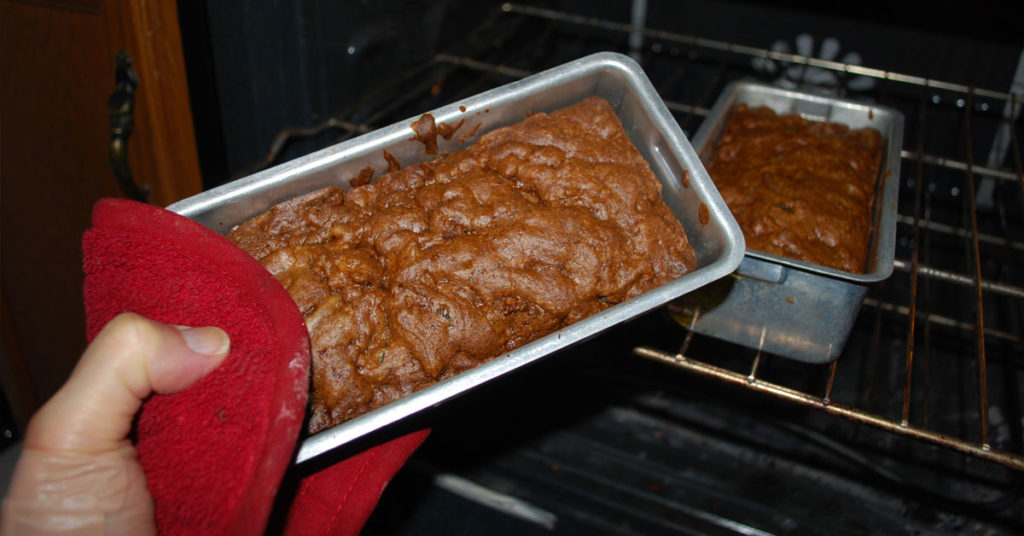
Wild summer grapes growing along a Botetourt County roadside. Photo by Bruce Ingram.
By Bruce Ingram
“Would you mind if my wife Elaine and I picked those wild grapes growing on your land along the road,” I asked a landowner the other day. “We’d be glad to share some of the jelly we’re going to make with you.”
Now, who’s going to turn down an offer like that? The answer is virtually nobody, and autumn is a great time to prowl – with permission – Virginia’s woodlots, fields, and roadsides for all manners of wild fruits and nuts.
For example, in mid-September, Virginia’s most common wild grape – the summer grape – ripens. Elaine and I picked those aforementioned grapes on a Thursday, strained the juice on Friday, and concocted the jelly on Saturday. Summer grape jelly is tarter than any store variety, and the zesty flavor goes great with homemade brown bread hot from the oven.

Paw paws grow in cool hollows throughout much of Virginia. Photo by Bruce Ingram.
Next to ripen are paw paws, often in mid- to late-September here in the mountains of Southwest Virginia where we live. We make these fruits – sometimes called mountain custard – into bread and cookies, although one friend of ours swears that their highest calling is as ice cream.
Also about this time, four wild nuts are ripening: black walnuts, and shagbark, mockernut, and pignut hickories. Black walnuts, by far, are the most important of the quartet and the best tasting as well. Walnuts are a chore to deal with – you’ll have to remove the outer husk, crack the nut, and painstakingly use a pick to extract the nut meat – but the effort is well worth your time. The rich, (well, nutty is the best way to describe it) flavor adds an intensity of flavor to homemade breads and cookies.

Persimmon bread – hot from the oven! Photo by Bruce Ingram.
Shagbark hickory nuts are the biggest and tastiest of the hickory trio, though the mockernut variety is no slouch in the taste department. Pignut hickories are the smallest of the threesome, and the most difficult ones to extract nut meat from. We generally only bother with them if we can’t find many nuts from shagbark and mockernut trees.
As good as all of these fruits and nuts are, our favorite fall wild food to gather is the persimmon. Ripening last in late October to early November, persimmons make the best bread – wild or otherwise – that I have ever eaten. The deep orange, almost brown loaves are very appealing to look at and it’ll be hard to stop with just a slice or two – especially if you added black walnuts or hickory nuts to the batter.
Need a recipe? Check out Elaine’s Whole Wheat/Wild Black Walnut Persimmon Bread!
So if you’re interested in some free fall food that’s tasty and nutritional, it’s there for the asking – literally.
Note: Bruce and Elaine Ingram have written a book on hunting, fishing, and gathering for food (with recipes), Living the Locavore Lifestyle. For a copy, contact them at bruceingramoutdoors@gmail.com.


